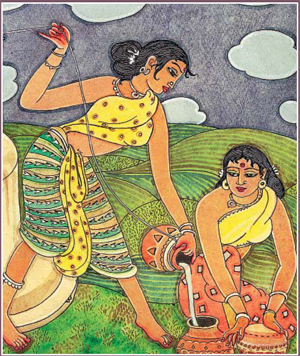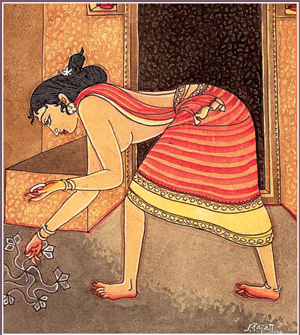

Bathing§
The women bathe in the river at hidden places specially reserved for them. They apply fresh turmeric root to the skin as a toner, skin color enhancer and anti-bacterial. Early European visitors were so impressed with the daily bathing ritual of Indian women that upon returning home they slowly convinced the rest of Europe of the merits of bathing more than once a week or month.§

Sanctifying the Doorway§
Here, the home’s entryway is adorned with turmeric paste and red kumkuma powder. The daily morning decoration is a blessing intended to beseech guardian devas to allow entry only to beings, both physical and subtle, who will benefit the family and home environment, rather than causing discord.§

Preparing Meals§
In this scene, vegetables are washed and cut with the aid of a knife-like blade affixed to a wooden platform. The platform includes a seat for the woman, which makes for effortless cutting and minimal fatigue—the original “Cuisinart.” (Right) Once yesterday’s milk cures and becomes curd, it is stirred into butter and boiled into ghee. The woman vigorously churns the frothing liquid in big pots with a ladle of wood turned with a cord.§









